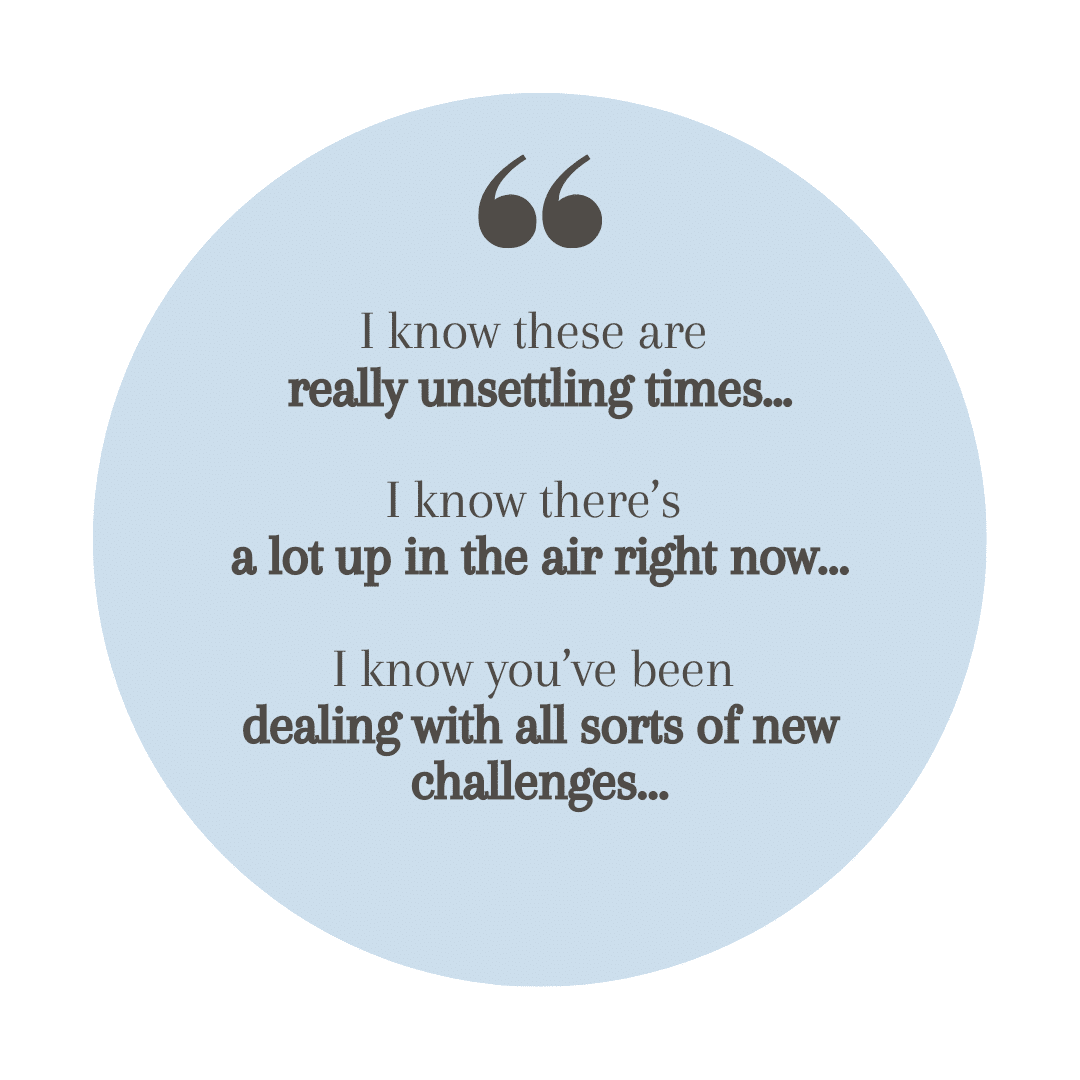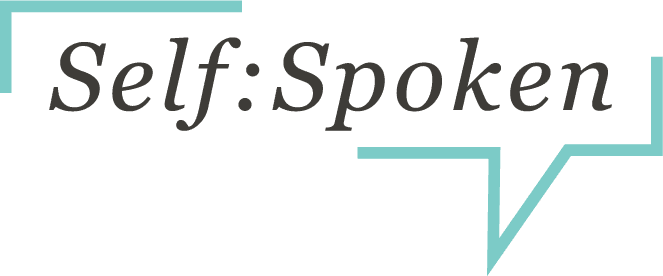Real talk…
Do you hear yourself saying a lot of this lately?
“I know these are really unsettling times…”
“I know there’s a lot up in the air right now… “
“I know you’ve been dealing with all sorts of new challenges…”

Because if so, your heart’s clearly in the right place, but you might be missing a MAJOR opportunity…
Think about it.
Let’s say you’re on a follow-up call with a prospective client. You kick off your pitch by generally commenting on the state of the world:
“We know this is a really strange and difficult time and we wanted to talk to you today about some of the strategies we’ve been using…”
Would this intro make your prospective client–an individual with specific challenges and concerns–feel like you get them? And what they’re uniquely up against? (What keeps them up at night…?)
Probably not.
Check out this 1 minute clip to learn a powerful mindset and messaging shift. It’ll help you meet whomever you’re speaking to where they are–in their specific circumstances–so they trust that YOU can help them.
Bottom line?
The more intentional you are about understanding your customer’s issues in their language, and the more consistent you are about reflecting their words back to them, the more they’ll feel like your focus is truly on THEM. AND that you’re uniquely suited to help them.
So just to reemphasize how to apply this strategy next time you’re pitching or need to meet someone where they are:
Step 1: Be curious. Start by asking questions that get to the root of what your audience is up against and listen for the common threads in their language.
Step 2: Reflect those common threads back to them and highlight what you’re hearing in their language before you make any suggestions.
Example: It sounds like one of your primary challenges is… OR: Since you mentioned [insert direct quote], you might be wondering how to [inferred desire].
Step #3: Build your follow-up conversation around their specific thoughts, questions and challenges – not your suggestions. The key is specificity. Lead with what they’re up against, in their language, then follow with what you can do to help them.
Example: If you want to tackle [insert concern or challenge verbatim], I’d suggest setting up [insert specific solution].
What do you think about this approach? Does it feel intuitive to you? Or will it require some extra effort to first speak your audience’s language, then offer your insights?
And if you got something out of this video, please share it with your friends and colleagues. They’ll thank you for it!
Finally, if you’re not already subscribed to my E-Tribe, sign up for your free copy of my Presence Playbook so you can show up to your next virtual meeting or presentation with less nerves, undeniable presence, and a game plan for articulating yourself in the most clear and compelling way.
In the meantime, keep showing up as the YOU, you most want to be. One intention, one interaction at a time.
Thanks so much for watching and I’ll see you next week!
All my love,


Two Ways to Sound More Confident When You Speak
🎥 [Watch the 2-minute video below] to learn two quick, game-changing shifts that can instantly elevate your presence—without memorizing a script or becoming someone…
Ever walked out of a high-stakes meeting or presentation thinking, “Why did I say all that?” Or worse—“Why didn’t I say anything at all?”…
Do you ever get frustrated when you find yourself not speaking up in meetings or missing opportunities due to fear of not saying the…



